Meeting CORSIA’s demand with sovereign ITMOs


· 6 min read
As the airline industry entered its first CORSIA decarbonisation implementation phase (2024-2026) there is currently a shortage of Eligible Emission Units (EEUs) to help the industry meet its climate-compliant targets. ITMO Ltd. explores how this can be resolved by using Sovereign Article 6 ITMOs from the Paris Agreement.
n 2016, governments adopted CORSIA, the Carbon Offsetting and Reduction Scheme for International Aviation, to stabilize net CO2 emissions from international aviation from 2021. Since 2019 all airlines are required to report their CO2 emissions on an annual basis, and since 2021, international flights have become subject to offsetting obligations.(1)
CORSIA is a market-based scheme to drive emissions reductions in international aviation, and establishes criteria to ensure that the Eligible Emissions Units (EEUs) used by airlines are real, accurate, and permanent.
The demand for such EEUs (carbon credits) are quite significant. The potential demand for CORSIA’s compliance purposes in 2024-2026 is estimated to vary between 17 and 75 million tons EEUs each year.(2)
However, the forecasted supply for CORSIA’s first phase amounts to only 34 million EEUs, falling short of all demand scenarios. In the minimum case, short by 50% (51m EEUs), and in the maximum case, short by 600% (225m EEUs).(2)
Another interesting comparison point is with the current traded volumes from the Voluntary Carbon Market (VCM), which last year traded about 111m tCO2e. In total, the average demand of EEUs in its first implementation phase represents almost 43% of the total traded VCM credits volumes.(3)
Since the start of the first implementation phase this year (2024-2026), there is a shortage of EEUs that airlines need to meet their required targets. The scarcity of EEUs relates to two main factors according to IATA’s latest analysis:
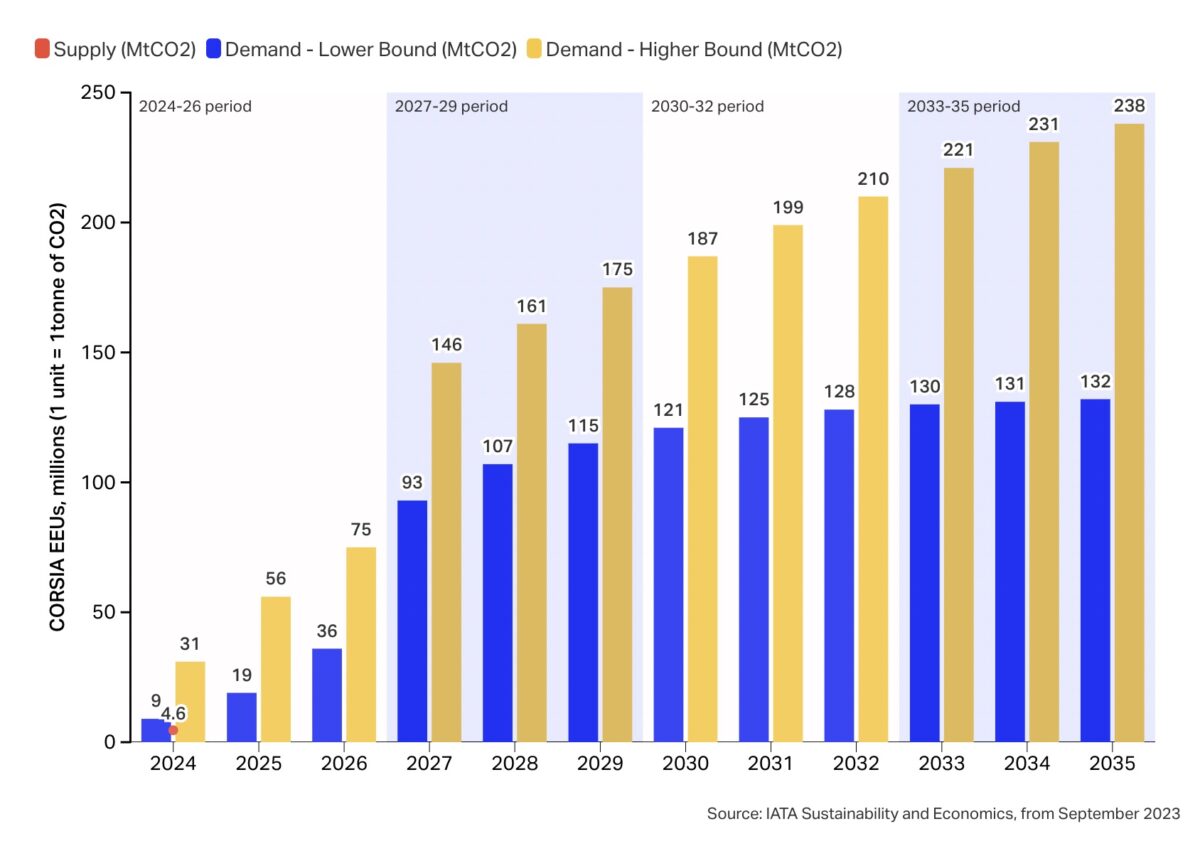
“Moreover, the host countries, where the EEUs originate, must authorize their release from the country’s national registry by conducting a “corresponding adjustment” in their Nationally Determined Contributions (NDCs), submitted under the UNFCCC Paris Agreement.” – IATA (2024)
Since Suriname issued the world’s first Sovereign Carbon Credits ITMOs under Article 6 of the Paris Agreement this month, a lot of these supply shortage challenges can be resolved.
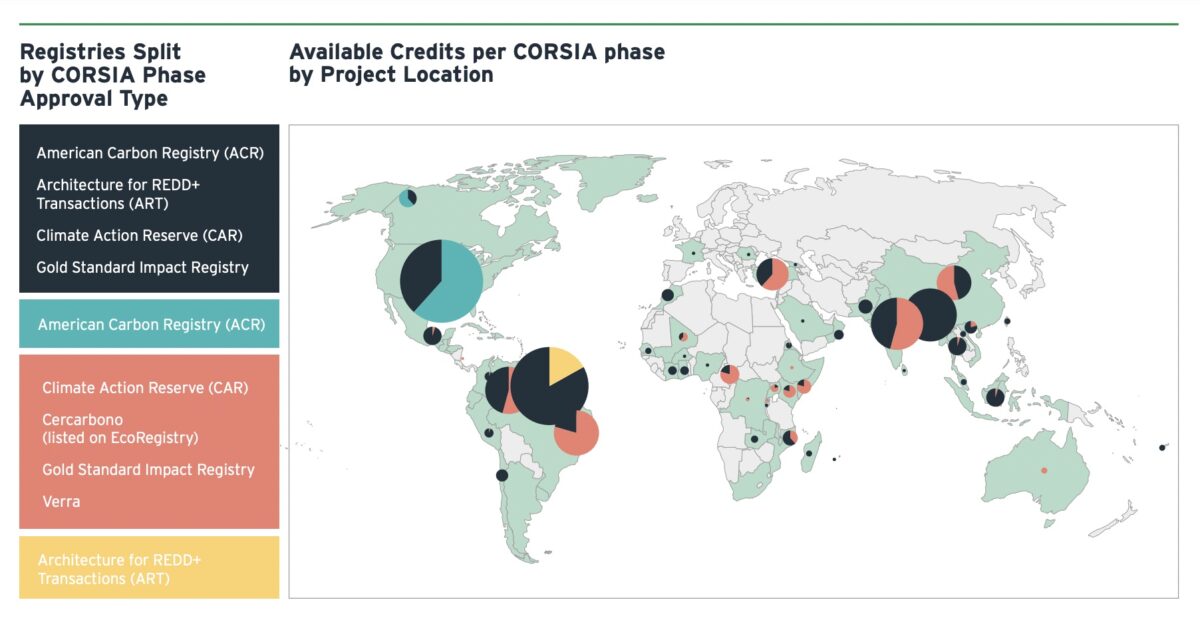
Allied Offsets – CORSIA Volunteer Member States (2024)
Since 2024, 126 States volunteered to participate in CORSIA, and Suriname is one of these ICAO Member States and a CORSIA volunteer participating States since 2023.(5) Therefore Suriname is allowed to and can envisage to authorise its Article 6 ITMO carbon credits with and through a Letter of Authorisation (LOA).
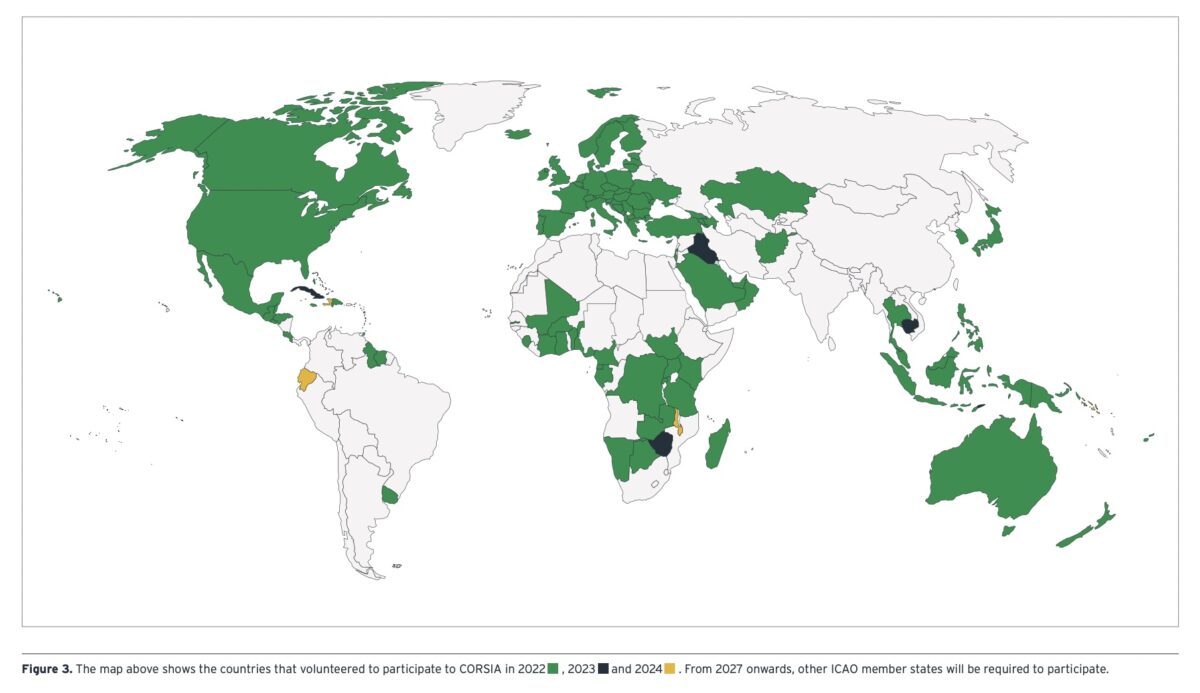
Under ICAO’s Resolution A39, ICAO allows any carbon products and tools from the Paris Agreement into their CORSIA scheme, as any units generated from the Paris Agreement are eligible to be used.(6)
Decides that emissions units generated from mechanisms established under the UNFCCC and the Paris Agreement are eligible for use in CORSIA. – ICAO (2024)
Once again, Suriname is currently allowed to and can envisage offering its Sovereign ITMOs as CORSIA EEUs.
For a program to be eligible under CORSIA’s eligibility requirements, the carbon units (e.g. ITMOs) must meet all the following criteria.
Interestingly, Sovereign ITMOs issued under Article 6.2 of the Paris Agreement fulfill all these criteria, and here are all the associated articles and documentations that supports and justifies all these points:
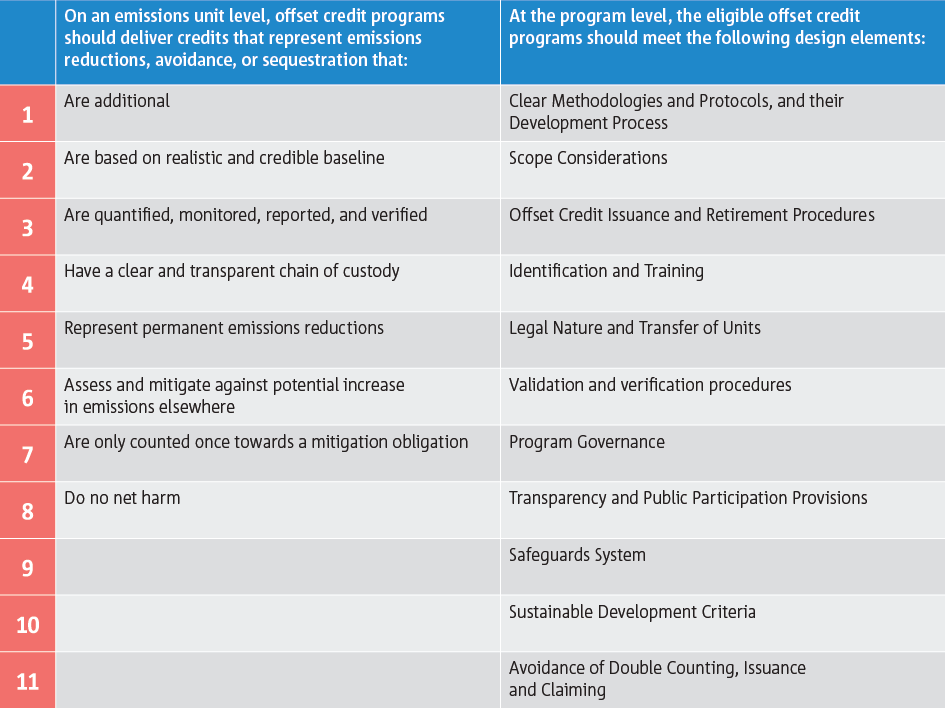
CORSIA Eligibility Criteria – European Union – Aviation Safety Agency (8)
As such, Suriname’s Sovereign ITMOs fulfil all of CORSIA’s eligibility criteria and can already be considered eligible as CORSIA EEUs.
Since Suriname has issued the world’s first Sovereign ITMOs, it has also created the world’s first ITMOs national registry.
As Suriname has posted their ITMOs on their national registry, it is very easy and quick for Suriname to correspondingly adjust their ITMO supply to meet any demands by CORSIA and its members.(7)
Furthermore, there is no risk of double counting, as these ITMOs are part of the global accounting system of the Paris Agreement, and will be correspondingly adjusted by Suriname once they are sold. (Please see Point 7 Above).
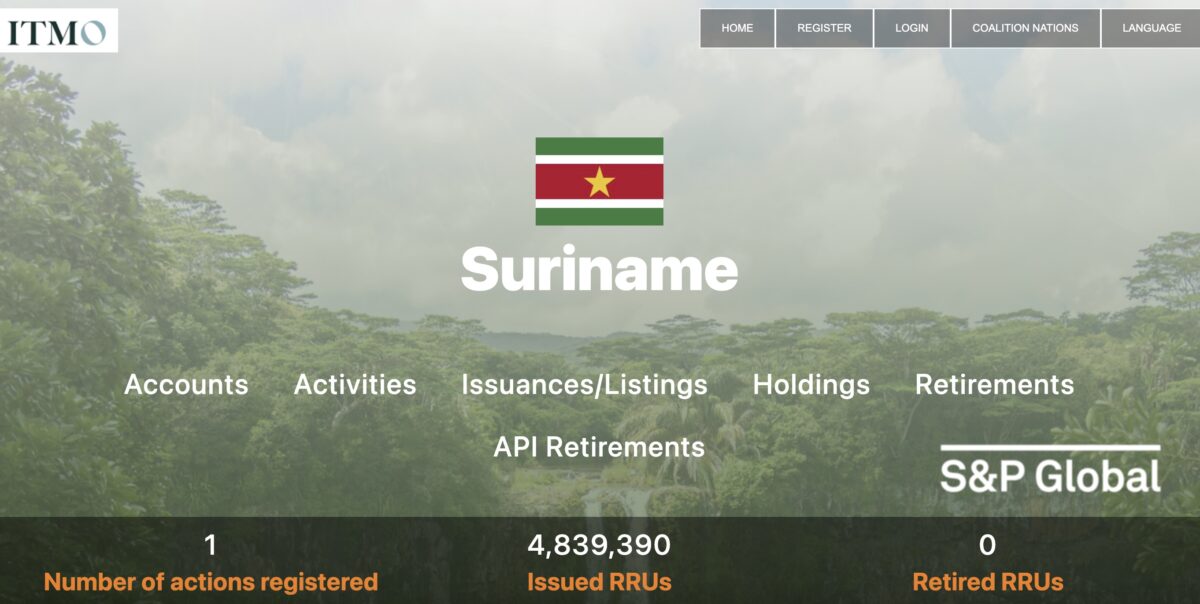
In addition to the elegibility criteria, current CORSIA EEUs seem to be fetching a considerably higher premium (2-6x) than current VCM carbon credits as analysed by AlliedOffsets. Similarly, Article 6 ITMOs as CORSIA. EEUs should reflect a comparable price premium as they fulfil all of CORSIA’s criteria, and are Paris-compliant.
The Airline industry’s decarbonisation plan through ICAO’s CORSIA system is crucial to meet the global targets of the Paris Agreement. For its first implementation phase (2024-2026) the demand for carbon credits from all airline members is quite substantive, 43% of last year’s (2023) total Voluntary Carbon Market’s traded volumes.
However, the current supply of EEUs (34m tCO2e) will not meet CORSIA’s requirements as shortages of EEUs range from 50-600% for CORSIA’s first implementation phase.
In order to resolve this EEUs shortage ITMO Ltd. strongly advises that ICAO immediately accepts current Sovereign ITMOs from countries, such as Suriname, as they are both members of ICAO and signatories of the Paris Agreement. In addition, these Sovereign ITMOs:
This article is also published on ITMO. illuminem Voices is a democratic space presenting the thoughts and opinions of leading Sustainability & Energy writers, their opinions do not necessarily represent those of illuminem.
illuminem briefings

Architecture · Carbon Capture & Storage
illuminem briefings

Carbon Market · Public Governance
illuminem briefings

Carbon · Environmental Sustainability
Inside Climate News

Carbon · Public Governance
Interesting Engineering

Carbon Capture & Storage · Architecture
Carbon Herald

Carbon Capture & Storage · Maritime